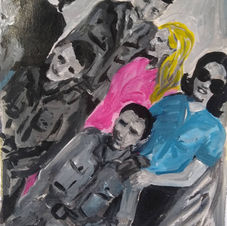
t’s hot. In summer, we like to lie down in the patio. When it’s wet, you have to be careful with that area where the tiles become slippery. This afternoon, they set up the Pelopincho pool and placed the chairs in a circle to wait for visitors. Among the chairs, all different, there are some with metal legs that screech horribly when dragged over the concrete, and others —the ones I like the most— made of wood and wicker. Among them, the survivor. The Valencian great-great-grandfather worked making chairs, and that one is the only fossil remnant that bears witness to that fact. I don’t like sitting on it because it pricks, its legs are deformed, and there are holes in the wood from which thousands of bugs could crawl out. But I’m fascinated by imagining the hands that wove it and knowing that there was an owner of those hands, whose name was Vicente, who had had two wives and a daughter who lost her teeth to typhoid fever and lived until she was eighty years old with her gums stuck together, until a surgeon gave her back her smile.
It is, for the most part, this necklace of relatives that makes up the raw material of my work. My sister and I liked to sit and listen to the elders. I soaked myself in the 20th century listening to those aunts on Saturday afternoons, with mate and sponge cake. Time ran more slowly, and every small everyday event, every object, was in itself an entire universe worthy of being told.














